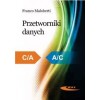- Out-of-Stock



No product available!
Open4 with software tool set for ARM core-based microcontrollers, with GCC compiler, 3rd party-compiler support and advanced project management and debugging / programming features
No product available!
SD Card Kingston CANVAS React 64GB Class 10. SDR / 64GB
No product available!
No product available!
No product available!
The RGB LED ruler has 8 programmable LEDs WS2812B with a built-in control system. It is possible to set a specific color for each diode. The module has an IN input for controlling and an OUT output to which further light points or other modules from WS2812B can be connected. The supply voltage is from 3.5 to 5.3 V, and the input voltage +/- 0.5 V of the supply voltage
No product available!
No product available!
No product available!
No product available!
No product available!
Kit for building an intelligent JetBot robot based on Jetson Nano. It consists of Jetson Nano with 2GB RAM, expansion module, WiFi card, camera, motors, housing and a set of mounting screws. JetBot AI Kit (USB WiFi) 2GB
No product available!
No product available!
No product available!
No product available!
Cable ties are made of flexible plastic characterized by its high durability, both mechanical and thermal. Lanberg ORG01-BVP300-MC6
No product available!
No product available!

